Pietermaritzburg, Commercial Road Cemetery
The transcriptions that were done under the auspices of the Genealogical Society of South Africa, Natal Midlands Branch and members of the Natal Inland Family History Society, have now, with their agreement and co-operation, been added to the eGGSA Burials database and can be searched online. There are also a number of Maps that were drawn up at the time of the transcriptions.
photo: Eckhard von Fintel.
In the usual layout of Voortrekker towns, we find the cemetery situated on the perimeter of the town. Pietermaritzburg was no exception and the early Voortrekkers buried their dead in what is now known as the Voortrekker section of the Commercial Road Cemetery (the old Grey’s Hospital side.)
Unfortunately, the names and dates of early settlers buried before 1889 (when the cemetery registers were started) (5) and who did not appear in a church burial register, or have stones erected in their memory, are now lost to us. The earliest inscription on a tombstone is that of Hendrik Van den Berg, who was born 1.3.1785 and died 5.9.1839 in the City at 54 years. (He was a Voortrekker whose burial took place within a year of the founding of Pietermaritzburg.)
It would seem that from the earliest times, the cemetery was divided up according to various religious denominations – Anglican, Catholic, Dutch Reformed, Presbyterian and Wesleyan. In Bishop Colenso’s book, “Ten Weeks in Natal”, (published 1855), he mentioned how on 7.2.1854 “we rode over the bridge …. and passing the burial grounds (where differences which separate Christians during life are still permitted to part their bodies after death) we entered the broad streets of the City.”
It was as early as the year 1860 that the City Council appointed a Public Cemetery Committee, one reason being to decide on the best site for a cemetery and the amount of land required. In 1883 and 1885 the area was fenced and the Municipality employed a caretaker who supervised the maintenance. (4). In 1918 the Anglican Church required more land for burials and purchased it from the Dutch Reformed Church. Thus Anglican graves can be found on both sides of Commercial Road.
In 1948 the Municipality took over the churchyard and it was close for burials except in exceptional circumstances. At a later date, the Municipality handed over all registers and maps regarding the Commercial Road Cemetery to the Natal Society Library for safe keeping.
From: The KZN Family History Society Website, author: Diane Scogings 2/4/1992
There are, so far as is known, no Commercial Road Cemetery burial registers dating from before 1860, for any of the churches. I don’t really know why but apparently the Municipality kept the registers up to 1860, despite the various cemeteries being owned by the churches (and my understanding is, being maintained by the churches). I don’t know what happened in 1860 and why it changed, but from that date the municipality no longer kept registers, and these were the responsibility of the various churches. Unfortunately, the municipal registers up to 1860, like all municipal records in Pietermaritzburg, were lost when the first City Hall burnt down in 1898.
So for all the cemeteries any records of deaths or burials prior to 1860 in the attached lists are what were taken from the actual tombstones.
From 1860 to 1948 the cemeteries were administered by the churches, who all kept registers EXCEPT apparently the Roman Catholic church. With the exception of a list of the indian people buried in the Catholic section, there are no registers for the Catholic section, and as far as can be ascertained, there never were. Personally, I find this hard to believe, but that is what the records in the Bessie Head Library tell me. Why they would have kept a list of the indian people but no others, does not quite make sense, but there It is.
In 1948 the Catholic section was “cleaned up” by the municipality following their takeover (with, apparently, the agreement of the Catholics) and all broken tombstones, etc removed. This list is therefore probably a long way short of being a complete list of persons buried in this section.
The municipality wished to “clean up” the other sections as well, but could not get the agreement of the churches so to do.
Notes from Neil Bloy, 2022 November.
ANGLICAN Section
Registers from the Natal Society Library were consulted. Burial registers of the Anglican Church were also examined. These records can be located in the Natal Diocesan Archives at the Cathedral Centre in Pietermaritzburg. Maps of the cemetery are available. Some of the graves which are listed have been badly vandalised, but we were fortunate to be able to piece together some of the broken stones and record them.
All graves researched and checked by the members of the Genealogical Society of South Africa, Natal Midlands Branch, and members of the Natal Inland Family History Society. The list was compiled by Mrs D Scogings and Mr M Scogings.
JANUARY 1993
CATHOLIC SECTION of the Commercial Road Cemetery, Pietermaritzburg
Researched and compiled by Jennifer G Duckworth - 1984
This is a list of graves with tombstones existing in 1984. As There is no plan or register of the Catholic cemetery, nor does there appear to have ever been one, and the graves themselves are unnumbered and randomly arranged, I have divided the cemetery into 6 rough blocks as indicated in the accompanying sketch.
Some of the stones are covered completely by earth and grass and may have subsequently disappeared once more.
There is also a list of Indian plot owners which is a bit unsatisfactory as the original compiler of the list seems to have been only semi-literate. Most of the Indian and Black graves are in Block F which has very few gravestones.
Blocks A, B, C & D are parishioners' graves. Block E was used by the religious orders of priests, nuns and brothers.
HISTORY: The burial ground was granted to the Roman Catholic community in 1850. At this point it measured only 1 acre 30 perches. An extension was granted in October 1884 which doubled its size. The earlist gravestone surviving in the cemetery is that of Sarah Doyle who died on 18 June 1854 aged 37. She was the wife of Dennis Doyle, an ex-45th Regiment soldier.
DUTCH REFORMED CHURCH and PRESBYTERIAN CHURCH sections
This list of graves has been compiled by D & M Scogings from registers held by the Presbyterian Church, Longmarket Street Pietermaritzburg and the Dutch Reformed Church at their archives in the Synodale Sentrum in Burger Street, Pietermaritzburg. Dates in the Presbyterian section have been checked by Mrs S Spencer.
All graves researched and checked by the members of the Genealogical Society of South Africa, Natal Midlands Branch, and members of the Natal Inland Family History Society in 1992.
WESLEYAN CEMETERY, Commercial Road, Pietermaritzburg
All Wesleyan graves researched, transcribed ad checked by Mr. D. Buckley, senior librarian in charge of special collections, Natal Society Library, Pietermaritzburg and the Map of the Cemetery was also drawn by Mr. D. Buckley.
Index compiled by Mrs D. Scogings and Mr M. Scogings.
MARCH 1993

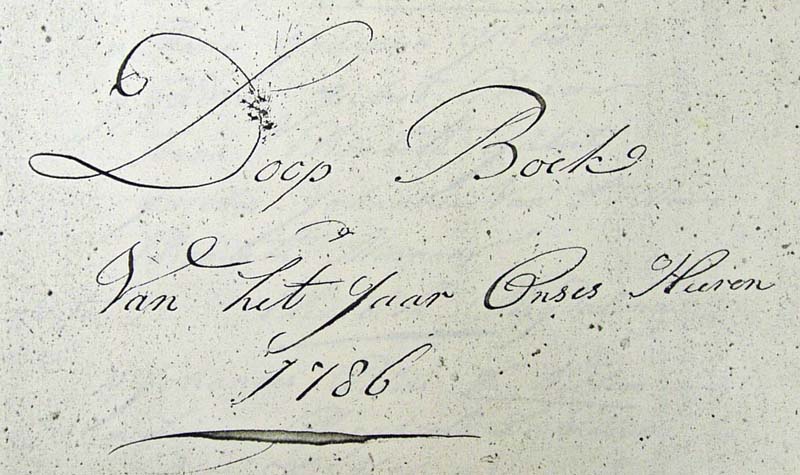 Data from the Drakenstein baptismal register from 1694 to 1744 is now available in the
Data from the Drakenstein baptismal register from 1694 to 1744 is now available in the 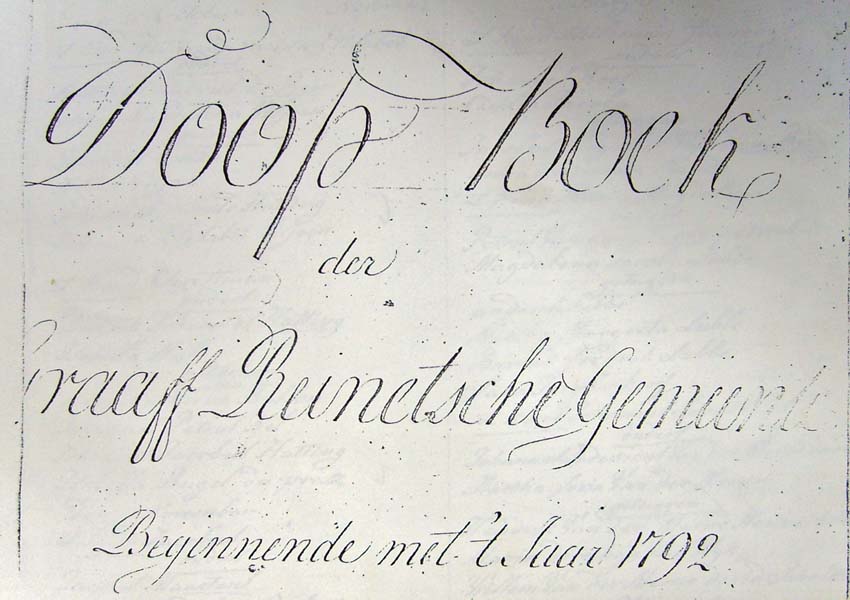 Cornel Viljoen has kindly made his transcription of the Graaff-Reinet NGK baptism registers 1792-1805 available for the
Cornel Viljoen has kindly made his transcription of the Graaff-Reinet NGK baptism registers 1792-1805 available for the 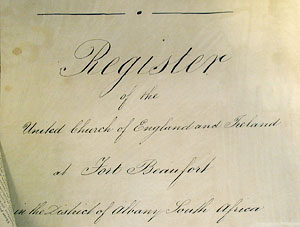 This register, of the Anglican pastor at Fort Beaufort (there was no church building at the time), which includes Baptisms, Marriages and Burials, has been transcribed by Lorraine Beechey from Tessa King's photographs of the original register in the Cory Library. Proof read by Brenda Gassner.
This register, of the Anglican pastor at Fort Beaufort (there was no church building at the time), which includes Baptisms, Marriages and Burials, has been transcribed by Lorraine Beechey from Tessa King's photographs of the original register in the Cory Library. Proof read by Brenda Gassner.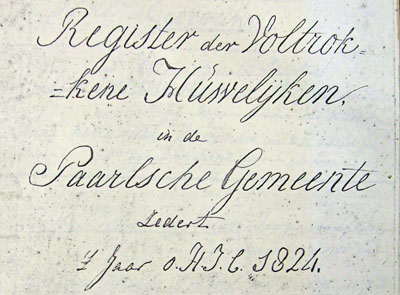 Transcriptions of these marriages have been added to the
Transcriptions of these marriages have been added to the  Corney Keller has added six more years (1757 to 1762) of marriages to his magnificent series of
Corney Keller has added six more years (1757 to 1762) of marriages to his magnificent series of 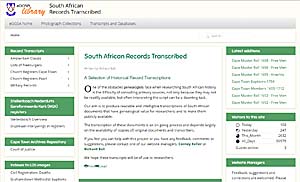 Corney Keller has added the following transcripts to the eGGSA SA Records site so far this year:
Corney Keller has added the following transcripts to the eGGSA SA Records site so far this year: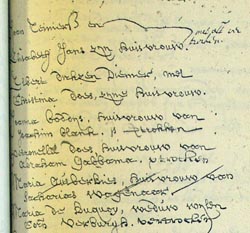 Transcription of the Cape Town Nederduitse Gereformeerde Kerk (NGK) membership lists by Corney Keller have now been completed up to 1712. He has transcribed the earliest of such lists, 1665 to 1712, now available on the eGGSA website:
Transcription of the Cape Town Nederduitse Gereformeerde Kerk (NGK) membership lists by Corney Keller have now been completed up to 1712. He has transcribed the earliest of such lists, 1665 to 1712, now available on the eGGSA website: 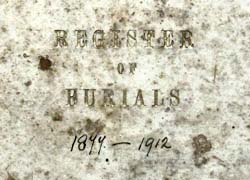 The burial register of Christchurch (Anglican), Grahamstown, 1877-1917, has been transcribed by Lorraine Beechey using William Jervois' photographs of the original register in the Cory Library, Rhodes University, Grahamstown, MS 17 633, by agreement with the Cory Library and the Archdiocese of Grahamstown. Brenda Gassner did the proof reading.
The burial register of Christchurch (Anglican), Grahamstown, 1877-1917, has been transcribed by Lorraine Beechey using William Jervois' photographs of the original register in the Cory Library, Rhodes University, Grahamstown, MS 17 633, by agreement with the Cory Library and the Archdiocese of Grahamstown. Brenda Gassner did the proof reading.